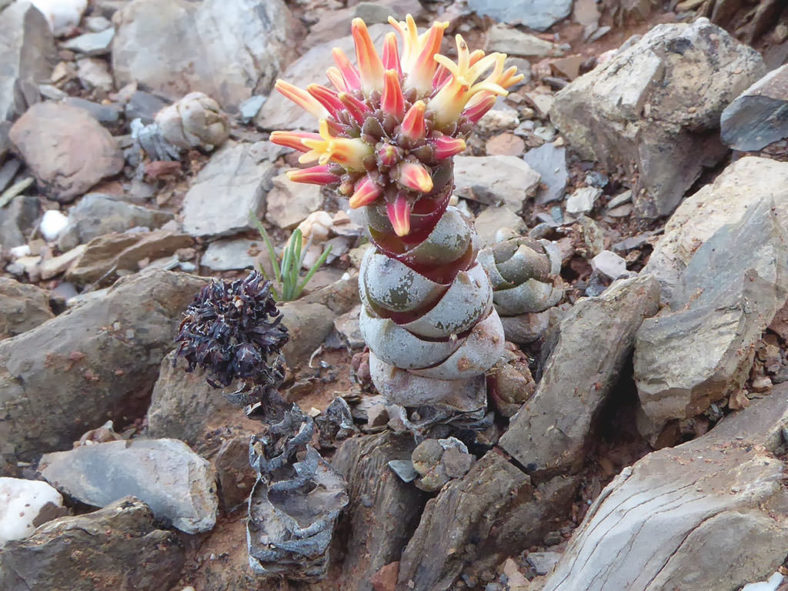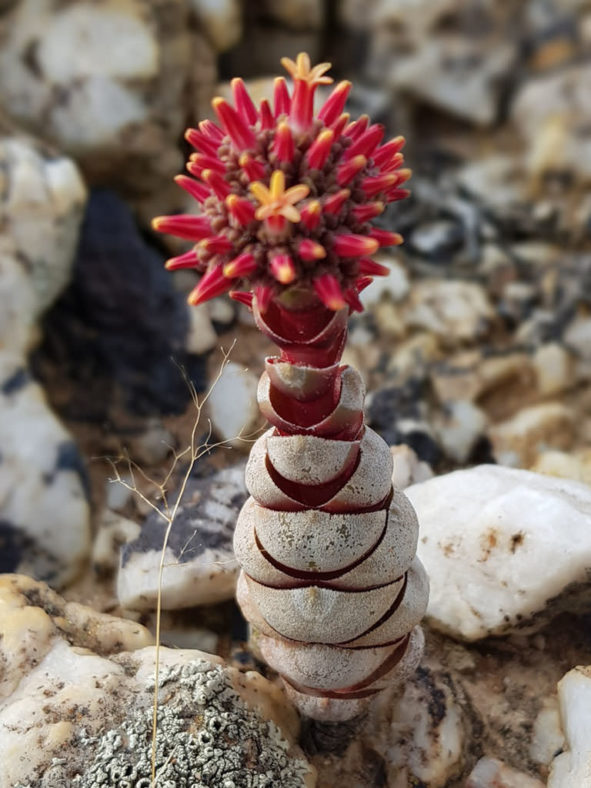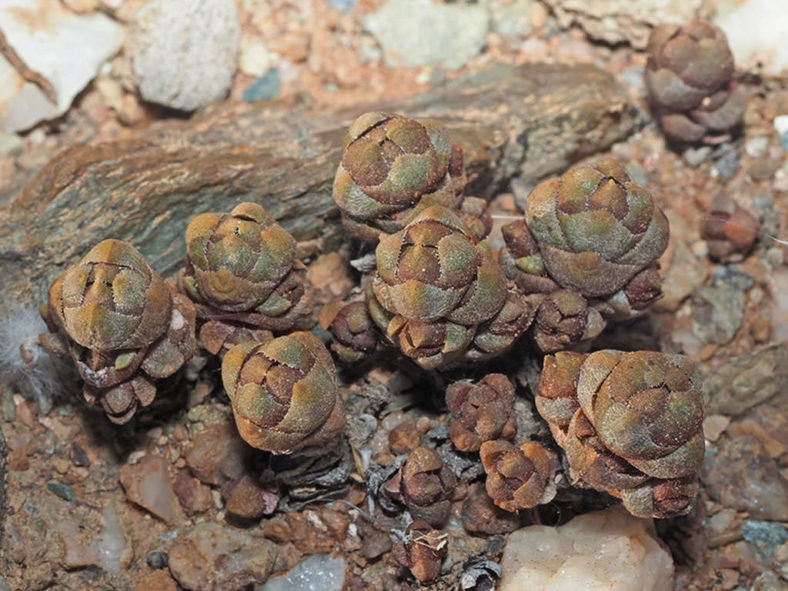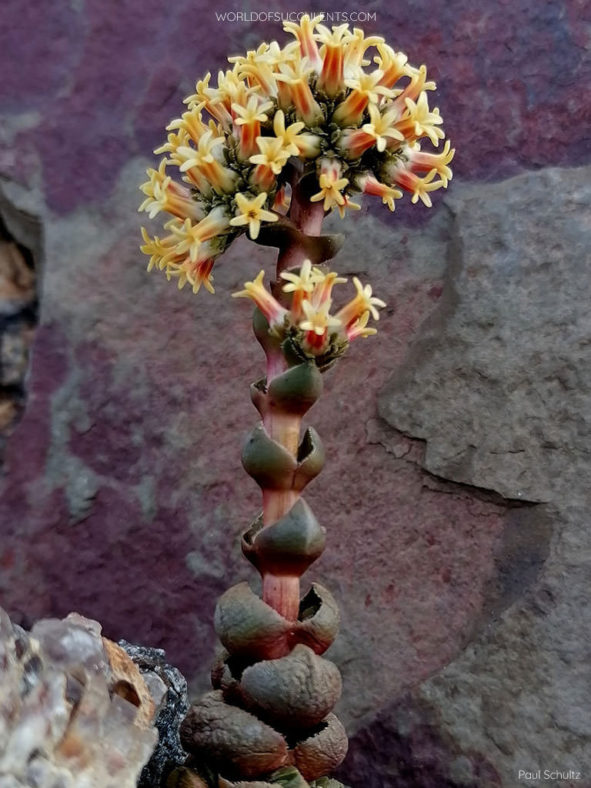Scientific Name
Crassula columnaris subsp. prolifera Friedrich
Common Name(s)
Leather Button, Shaving Brush
Synonym(s)
Tetraphyle columnaris var. prolifera
Scientific Classification
Family: Crassulaceae
Subfamily: Crassuloideae
Genus: Crassula
Etymology
The subspecific epithet "prolifera (pro-LEEF-er-uh)" means "proliferous" and refers to the growth habit of this subspecies.
Origin
Crassula columnaris subsp. prolifera is native to South Africa (Northern Cape and Western Cape) and southern Namibia. It grows on gentle slopes or in depressions, often with quartzite gravel, rarely in shallow soil in rock crevices.
Description
Crassula columnaris subsp. prolifera is a small succulent with short, erect stems hidden by tightly packed leaf pairs, forming a tapering columnar body. It can grow up to 3.2 inches (8 cm) tall and usually produces offsets at the base or in the axils of the lowest leaves. The leaf columns can reach 0.8 inches (2 cm) in diameter. The leaves are thick, fleshy, and mucronate, with a distinct keel on the lower surface. The leaf color varies from gray-green to red or brownish.
The inflorescences are partly hidden by the upper leaves or branched well above the leaves. The flowers are white to pale yellow and appear from mid-winter to spring. This plant is monocarpic, which means the stem dies after flowering.

How to Grow and Care for Crassula columnaris subsp. prolifera
Light: C. columnaris subsp. prolifera prefers full sun to partial shade. However, intense afternoon sun in the hottest period of summer can burn the leaves of the plant. Therefore, a place with morning sun and afternoon shade would be perfect. Indoors, place your plant in a window that receives at least 6 hours of direct sunlight.
Soil: This plant is not particular about soil pH but requires very porous soil with excellent drainage. Use commercial potting soil mixes designated for succulents, or mix your own.
Temperature: Like most Crassulas, this succulent will tolerate short-term freezing, but extremes of cold or heat will cause it to lose leaves and die. C. columnaris subsp. prolifera can withstand temperatures as low as 25 °F (-3.9 °C). USDA Plant Hardiness Zones 9b to 11b, 25 to 50 °F (-3.9 to 10 °C).
Watering: Avoid overwatering using the "soak and dry" method, where the soil is soaked with water, slowly drained, and left to dry out before watering again. Reduce watering in winter. Potted plants require more frequent watering than those in the ground.
Fertilizing: C. columnaris subsp. prolifera does not need much feeding but will benefit from a small amount of organic fertilizer when it starts actively growing in mid-spring.
Repotting: Repot as needed, preferably in spring, at the beginning of the active growth period. Make sure the soil is dry before you begin repotting.
Propagation: This succulent is generally started by offsets. It can also be grown from seeds. Sow the seeds in the spring or summer. Propagating by dividing offsets is easy because the parent plant has already done most of the work for you.
Learn more at How to Grow and Care for Crassula.
Toxicity of Crassula columnaris subsp. prolifera
C. columnaris subsp. prolifera is nontoxic to people and pets.
Links
- Back to genus Crassula
- Succupedia: Browse succulents by Scientific Name, Common Name, Genus, Family, USDA Hardiness Zone, Origin, or cacti by Genus
Photo Gallery
Click on a photo to see a larger version.


